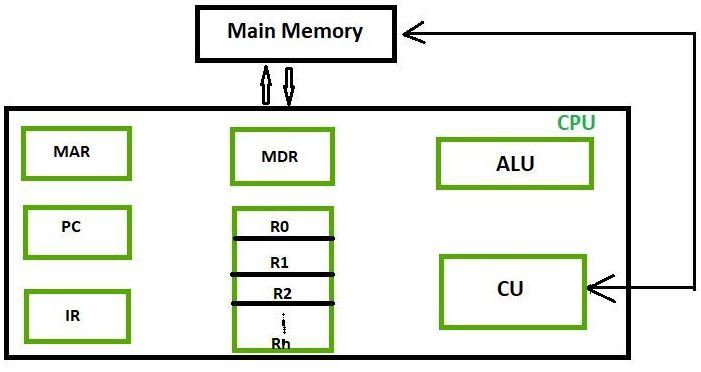Where Are Registers Located In Cpu
Different Classes of CPU Registers
In Computer Architecture, the Registers are very fast computer memory which are used to execute programs and operations efficiently. This does by giving access to commonly used values, i.e., the values which are in the point of operation/execution at that time. So, for this purpose, there are several different classes of CPU registers which works in coordination with the computer retentivity to run operations efficiently.
The sole purpose of having register is fast retrieval of information for processing by CPU. Though accessing instructions from RAM is comparatively faster with hard drive, it still isn't plenty for CPU. For even better processing, there are memories in CPU which can get data from RAM which are about to be executed beforehand. Afterward registers nosotros have cache memory, which are faster merely less faster than registers.

These are classified as given below.
- Accumulator:
This is the almost frequently used annals used to store data taken from memory. It is in different numbers in different microprocessors. - Retentivity Address Registers (MAR):
Information technology holds the address of the location to be accessed from memory. MAR and MDR (Retentiveness Information Register) together facilitate the communication of the CPU and the primary memory. - Retentivity Information Registers (MDR):
It contains data to be written into or to exist read out from the addressed location. - General Purpose Registers:
These are numbered equally R0, R1, R2….Rn-1, and used to store temporary data during any ongoing performance. Its content can be accessed by assembly programming. Modern CPU architectures tends to use more GPR so that register-to-register addressing can be used more, which is comparatively faster than other addressing modes. - Plan Counter (PC):
Plan Counter (PC) is used to keep the track of execution of the program. It contains the memory address of the side by side teaching to exist fetched. PC points to the address of the next instruction to be fetched from the chief retentiveness when the previous instruction has been successfully completed. Programme Counter (PC) as well functions to count the number of instructions. The incrementation of PC depends on the type of compages beingness used. If we are using 32-scrap architecture, the PC gets incremented by four every time to fetch the adjacent instruction. - Education Register (IR):
The IR holds the instruction which is just almost to be executed. The instruction from PC is fetched and stored in IR. As soon as the instruction in placed in IR, the CPU starts executing the instruction and the PC points to the adjacent instruction to be executed. - Condition code register ( CCR ) :
Condition code registers incorporate dissimilar flags that signal the status of any operation.for example lets suppose an operation caused creation of a negative result or zero, and so these flags are set up high accordingly.and the flags are
- Carry C: Set to 1 if an add operation produces a conduct or a decrease operation produces a borrow; otherwise cleared to 0.
- Overflow Five: Useful just during operations on signed integers.
- Zero Z: Set to one if the result is 0, otherwise cleared to 0.
- Negate N: Meaningful only in signed number operations. Set to one if a negative issue is produced.
- Extend X: Functions equally a carry for multiple precision arithmetic operations.
These are generally decided past ALU.
So, these are the different registers which are operating for a specific purpose.
Where Are Registers Located In Cpu,
Source: https://www.geeksforgeeks.org/different-classes-of-cpu-registers/
Posted by: fitzgeraldshmed1969.blogspot.com


0 Response to "Where Are Registers Located In Cpu"
Post a Comment